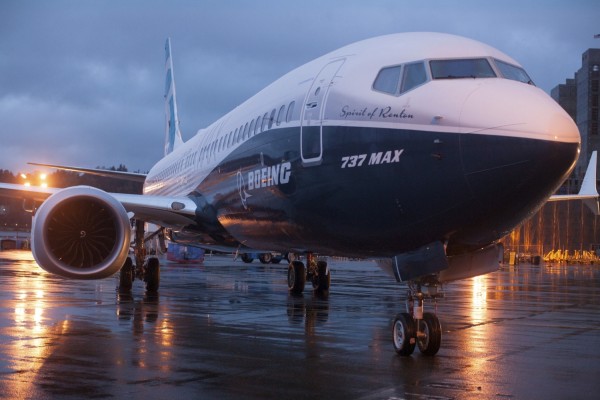Boeing Co on Wednesday confirmed a halt on 737 MAX deliveries after electrical problems re-grounded part of the fleet, and voiced concerns over a surging pandemic in India and U.S.-China political tensions.
Reuters reported on April 16 that Boeing stopped delivering its cash cow single-aisle 737 MAX after the electrical grounding problem - months after the plane returned to service following a lengthy safety ban.
The U.S. Federal Aviation Administration issued a new airworthiness directive Wednesday requiring a fix before the jets resume flight. The FAA said last week the issue impacts 109 airline planes worldwide but Boeing did not immediately say how many additional undelivered planes must be fixed.
Boeing's shares fell 2.4% after the U.S. planemaker reported its sixth straight quarterly loss and a charge on its high-profile Air Force One presidential jet program.
The barrage of technical and financial challenges clouded optimism over a resurgent U.S. domestic travel market fueled by vaccinations and pent up demand.
"We view 2021 as a critical inflection point for our industry," Chief Executive Dave Calhoun told analysts on a conference call.
Boeing has paused 737 MAX deliveries to address the electrical issues, and expects to "catch up on deliveries over the balance of the year," Calhoun added.
But Calhoun said he could not predict when the 737 MAX's electrical grounding issue would be resolved, and doubled down on fears of a long-off recovery of international travel, citing the pandemic's impact and tensions between Washington and Beijing.
He also said he expects China to lift its grounding order on the 737 MAX in the second half of 2021.
Boeing has delivered more than 85 737 MAX jetliners since it was cleared by most regulators to re-enter service late last year following two fatal crashes, lifting revenue and cash flow, it said.
Boeing said it still expects to deliver half the 400 MAX jets in inventory by end-2021, with a return to positive cash flow in 2022.
But the new electrical grounding problem found on some models of the jet earlier this month has cast a shadow on Boeing's freshly re-affirmed plans to increase 737 MAX production to 31 planes per month by early 2022. Airlines have pulled dozens of 737 MAX jets from service, awaiting repairs.
Calhoun, asked about concerns over Boeing's falling market share in the narrow-body market against European rival Airbus SE, said: "I want to split that market."
Highlighting Boeing's risk in one of the most important battlegrounds for the next generation of jetliners, U.S. major Delta Air Lines placed a firm order for 25 A321neo aircraft last week.
Calhoun's remarks come after Boeing extended its required retirement age of 65 to 70 to allow Calhoun, 64, to stay in the top job.
Calhoun plans to stay in the role until he is 70, insiders say. His decision surprised many in the industry who saw him as a shorter-term crisis manager and triggered the upcoming exit of Boeing's well-regarded CFO and heir-apparent for the job, Greg Smith, 54.
Boeing also reaffirmed a sharply-reduced production rate of five 787 jetliners per month after consolidating production at its South Carolina factory.
It is facing reduced demand due to the pandemic's impact on longer-haul travel, and a growing price tag for 787 retrofits due to production defects embedded in dozens of the advanced carbon-composite jetliners.
It still expects to deliver the first 777X mini-jumbo in late 2023 despite certification and design challenges, with a combined output of the new 777X and its 777 legacy model of two a month.
The U.S. planemaker reported a core operating loss of $353 million in the first quarter, its sixth-straight quarterly loss, compared with a loss of $1.70 billion a year earlier.
Boeing recorded a $318-million pre-tax charge related to Air Force One presidential aircraft due to a spat with a supplier.
In July 2018, Boeing received a $3.9-billion contract to build two 747-8 aircraft for use as Air Force One, due to be delivered by December 2024.
In the quarter, Boeing completed a hot-fire engine test on NASA's forthcoming SLS rocket and started production on the U.S. Air Force's new trainer jet.


